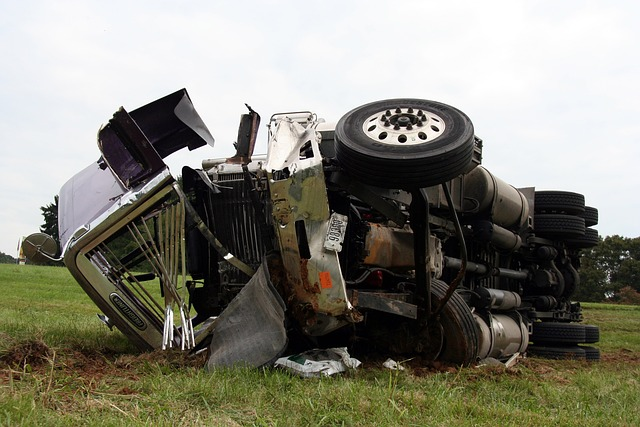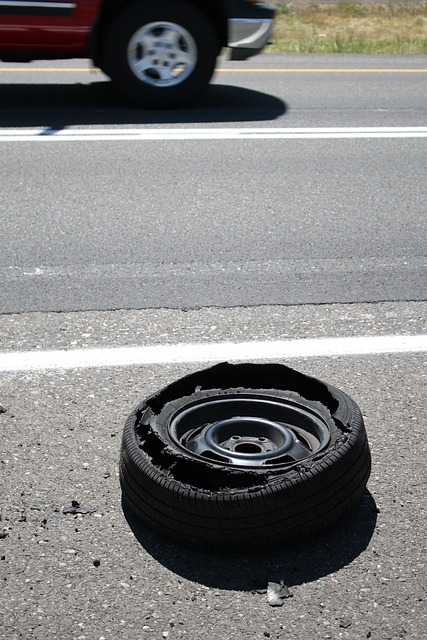7 Most Common Types of Truck Accidents
Truck accidents can have devastating consequences for truck operators and occupants, often leading to serious injuries, property damage, and even loss of life. As experts in personal injury law, the Daniel Sagiv Law Group is committed to raising awareness about the common types of truck accidents that trucking companies and individuals may encounter. In this informative blog, we'll delve into the seven most prevalent types of truck accidents, shedding light on their causes, potential consequences, and the legal recourse available to victims.
As always, reach out to the Daniel Sagiv Law Group if you suffer injuries from an auto collision with a semi in a truck accident!
Rear-End Collisions
Rear-end collisions involving trucks and passenger vehicles are a frequent occurrence on our roads. These accidents often transpire when a smaller vehicle comes to a sudden stop or slows down unexpectedly, and the truck driver fails to react in time. The sheer size and weight disparity between trucks and passenger cars in vehicle crashes can lead to catastrophic results, including severe injuries such as whiplash, spinal injuries, and traumatic brain injuries. Victims of rear-end collisions involving trucks and registered vehicles should consult a legal professional at the Daniel Sagiv Law Group to explore potential avenues for compensation.
Jackknife Accidents
Jackknife accidents are a particularly alarming type of truck accident, characterized by the trailer of a truck swinging outward at a sharp angle to the cab of a commercial vehicle or motor vehicle. This occurs when the wheels of the tractor trailer may lose traction, often due to adverse weather conditions, abrupt braking, or driver error. The result can be a dangerous situation where the trailer obstructs multiple lanes of traffic, leading to multi-vehicle collisions. Victims of jackknife accidents may face complex legal challenges, making it essential to seek guidance from experienced attorneys like those at the Daniel Sagiv Law Group.
Underride Accidents
Underride accidents involve a smaller vehicle colliding with the rear or side of a truck and sliding underneath its trailer. These accidents often result in catastrophic injuries or fatalities for occupants of the large truck crashes the smaller vehicle occupants, due to the lack of protective barriers to prevent intrusion. While regulations are in place to mitigate the risk of underride accidents, they still occur due to environmental factors such as poor visibility, inadequate lighting, and driver negligence. Victims of large truck accidents and their families deserve fair compensation, and the Daniel Sagiv Law Group is dedicated to helping them navigate the legal complexities of such cases.
Blind Spot Accidents
Trucks have significant blind spots, also known as "no-zones," where the truck driver's visibility is severely limited. Accidents frequently occur when vehicles linger in these blind spots, leading to collisions when the truck changes lanes or makes a turn. These accidents can result in serious injuries and extensive property damage. Victims of truck collisions and blind spot accidents need legal advocates who understand the nuances of truck accident cases, making the Daniel Sagiv Law Group a reliable partner in pursuing rightful compensation for truck those involved in fatal and fatal truck crashes here.
Rollover Accidents
Rollover fatal accidents, involving trucks can have devastating consequences due to the potential for cargo spills, collisions with other vehicles, serious injury crashes and the risk of the truck crushing nearby cars. Factors contributing to rollover fatal crashes occur in truck accidents include high speeds, improper loading, sharp turns, and adverse road conditions. In such cases, determining liability can be intricate, requiring the expertise of skilled attorneys who specialize in truck accident litigation, like those at the Daniel Sagiv Law Group.
Wide Turn Accidents
Truck drivers often require more space to execute turns, leading to wide turn accidents where a truck swings out to the left before completing a right turn. If other vehicles are present alongside the truck, they can become trapped or collide with the turning truck. These serious accidents happen and often stem from misjudgments or insufficient signaling by other other vehicles involved, either involved in fatal, or the truck driver. Victims of wide turn accidents need legal representation that can hold negligent parties accountable, and the Daniel Sagiv Law Group is well-equipped to offer guidance throughout the legal process.
Tire Blowouts
Tire blowouts on large trucks can lead to hazardous situations on the road, as they can cause the driver to lose control of the vehicle. When a tire blowout on large truck occurs, debris may scatter, and the truck might veer into other lanes or collide with nearby cars. These accidents can be attributed to factors such as improper maintenance, overloading, or equipment failure or road hazards. Determining liability in tire blowout accidents crashes involving large trucks requires a comprehensive investigation, and the skilled legal team at the Daniel Sagiv Law Group is dedicated to ensuring victims' rights are upheld.
Now, Let's Talk How You Stay Safe on the Road!
Sharing the road with heavy trucking traffic requires a heightened level of awareness and caution. As seasoned experts in personal injury law and commercial vehicles, the Daniel Sagiv Law Group is dedicated to ensuring your safety on the road and trucking industry. In this guide, we offer valuable insights and practical tips to help you stay safe while driving alongside large commercial trucks.
Maintain a Safe Following Distance
Maintaining a safe following distance is crucial when driving around trucks loaded tractor trailers. Trucks require longer distances to come to a complete stop due to their size and weight. To avoid rear-end collisions involving large trucks, aim to keep a minimum of four seconds of following distance between your vehicle and the truck in front of you. This buffer allows you ample time to react to sudden stops or emergencies.
Avoid Truck Blind Spots
Large trucks have significant blind spots, also known as "no-zones," where the driver's visibility is limited. These blind spots are located on the sides of the truck, directly behind the large truck occupants, and a significant distance in front. If you can't see the truck occupants or driver's mirrors, assume they can't see you either. Make sure to pass trucks quickly and avoid lingering in these blind spots to reduce the risk of accidents.
Exercise Caution When Passing
When passing a truck, ensure you have ample space and visibility before merging into the adjacent lane. Signal your intention to change lanes early and accelerate to a safe speed before passing. Avoid passing trucks on the right side, as they have larger blind spots on that side. Once you've overtaken the truck, provide plenty of space before merging back into its lane.
Give Trucks Adequate Turning Room
Large trucks require extra space to make turns, particularly right turns. Never attempt to squeeze between a turning truck and other passenger vehicles on the curb, as you could get caught in a potential collision. Allow trucks and smaller vehicles sufficient room to complete their turns safely, even if it means waiting for them to maneuver.
Stay Cautious During Inclement Weather
Adverse weather conditions can amplify the challenges of driving around trucks. Rain, snow, and fog can reduce visibility and road traction, most truck accidents, making it vital for other drivers to exercise extra caution. Maintain a safe following distance, reduce your speed, and ensure your headlights are on to enhance visibility to both truck drivers and fellow motorists.
Be Mindful of Truck Swinging Turns
Trucks with trailers have a pivoting point that can cause the trailer to swing wide during turns. Be vigilant of this phenomenon, especially at intersections. If you're stopped at an intersection and a truck tractor trailers is turning beside you, remain patient and allow the truck adequate space to complete the turn without impacting your vehicle.
Report Hazardous Truck Behavior
If you witness a truck driver exhibiting unsafe behavior, such as aggressive or distracted driving, speeding, or erratic maneuvers, consider reporting it to the appropriate authorities. Note down the truck's license plate number, company name (if visible), location, and the nature of the driver fatigue behavior. Reporting unsafe driving can help prevent potential accidents and protect others on the road.
Practice Defensive Driving
Defensive driving is paramount when sharing the road with other large commercial trucks too. Anticipate potential hazards, stay focused, and avoid distractions such as texting or adjusting the radio. Always be prepared for unexpected actions by semi trucks, truck drivers and other motorists, and be ready to react appropriately.
Truck accidents encompass a wide array of scenarios, each with its own unique set of challenges and potential legal implications. If you or a loved one have been involved in a truck accident, seeking legal representation is crucial to navigating the complex legal landscape and securing the compensation you deserve. The Daniel Sagiv Law Group has a team of experienced truck accident lawyers in Boca Raton that stands ready to provide expert guidance, support, and representation to victims of truck accidents, ensuring their rights are upheld and justice is served. Contact our team today to schedule a consultation and take the first step toward a brighter future.




